Canal Holiday - Llangollen Canal
Saturday 31 May and Sunday 1 June 2008 - Chirk to Llangollen
For the seventh annual bellringers' canal holiday,
this year the destination was the Llangollen Canal, starting from Chirk.
Stephen and Lucy had visited the canal before, but it was great to be
back and see afresh the wonderful scenery and several spectacular
engineering feats.
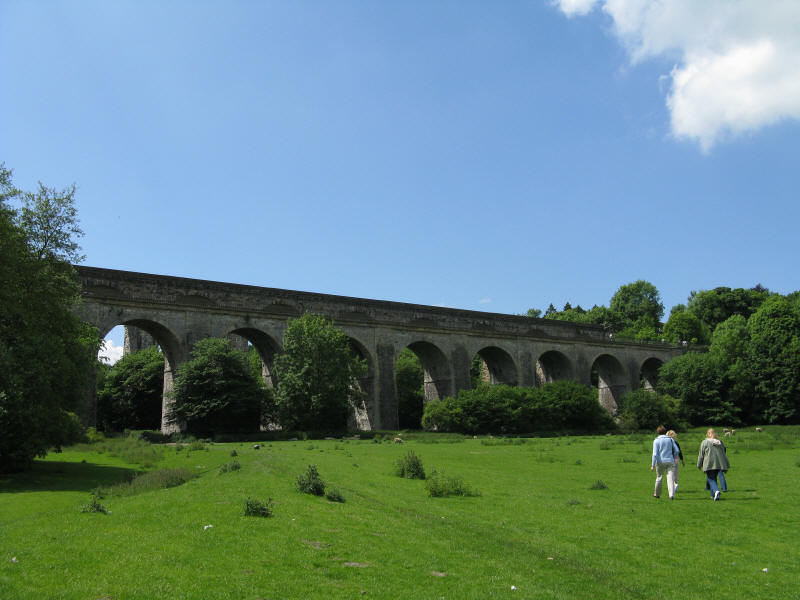
After seven of the nine of us had lunch at the Bridge Inn in Chirk, in a
bit of spare time before we went to the marina, some of us went for a
short walk along a footpath across a field to the base of the Chirk
Aqueduct and the later railway viaduct behind it.
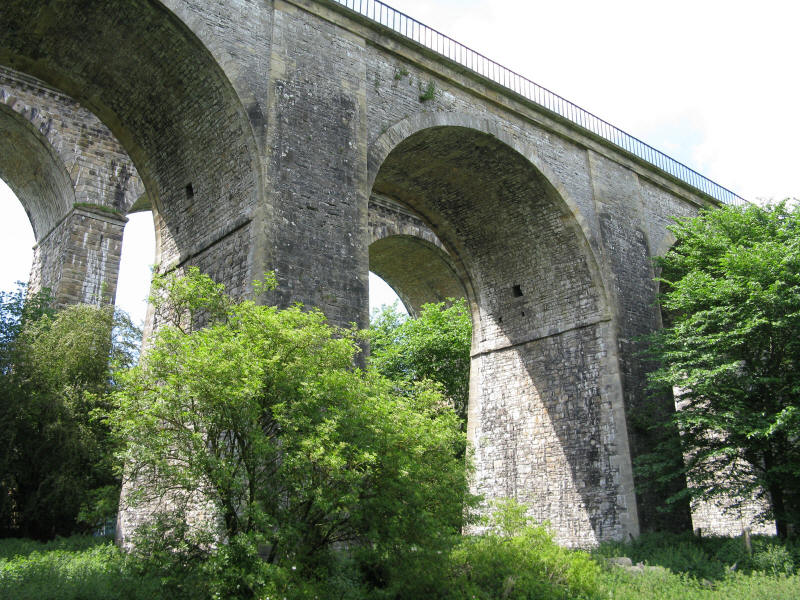
Looking up at the aqueduct.
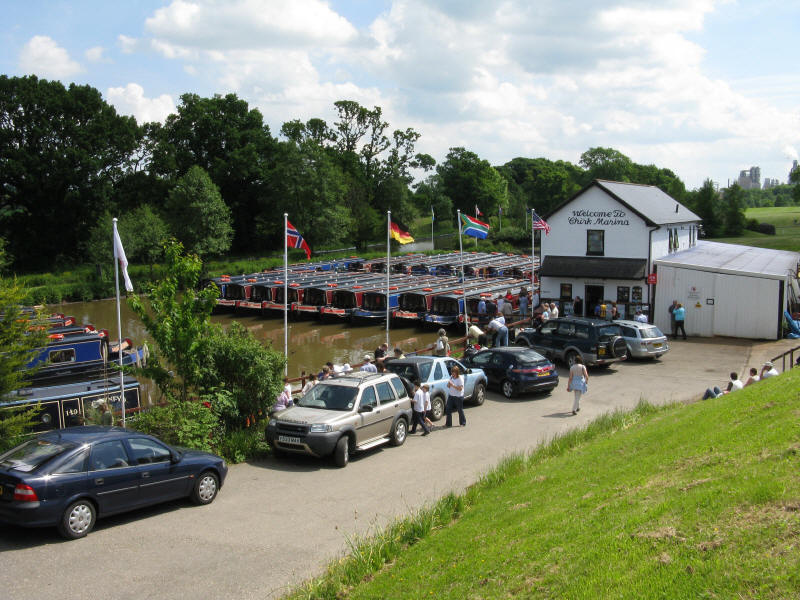
The car was unloaded and put in the car park, and on the return to the
marina, a view of the massed ranks of hire boats waiting to take to the
waters of the canal.
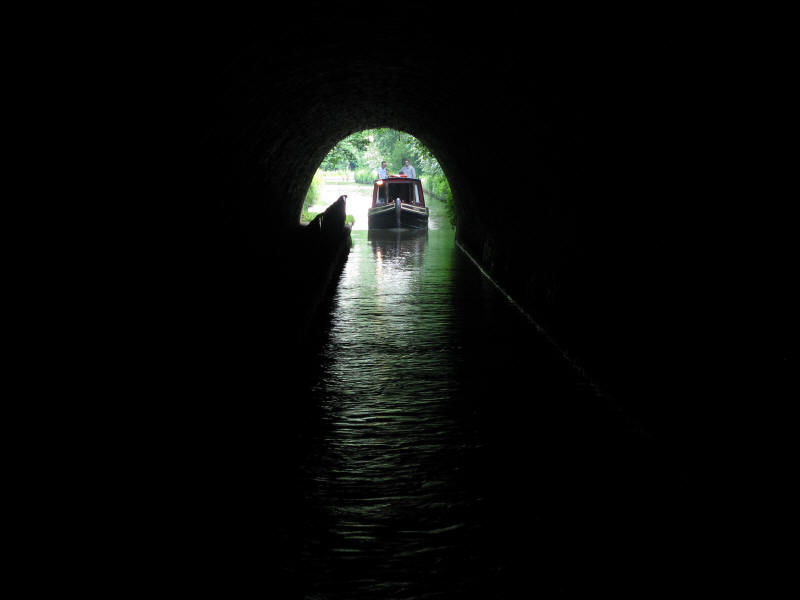
Underway less than an hour later, the first landmark is a short tunnel
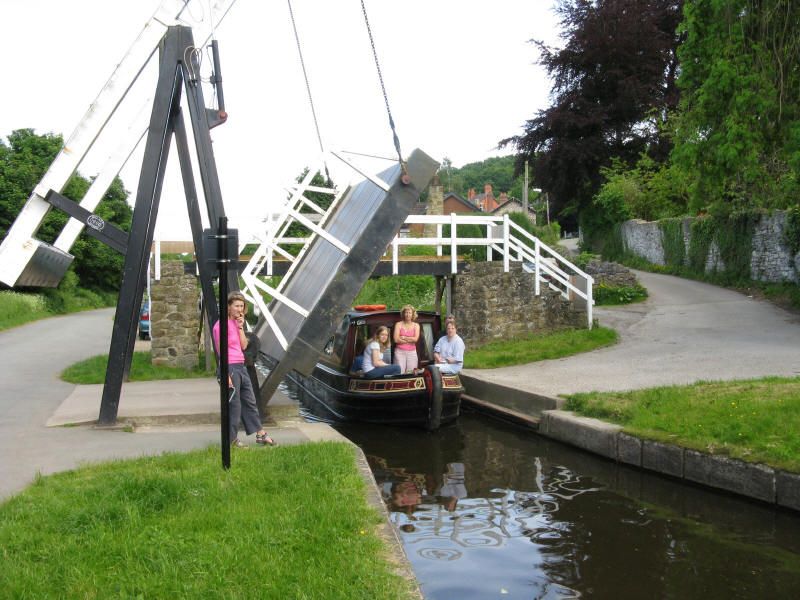
Helen, Jane and Helen on the bow of NB Rosa, watch the passage under the
lift bridge as the crew of another boat looks on.
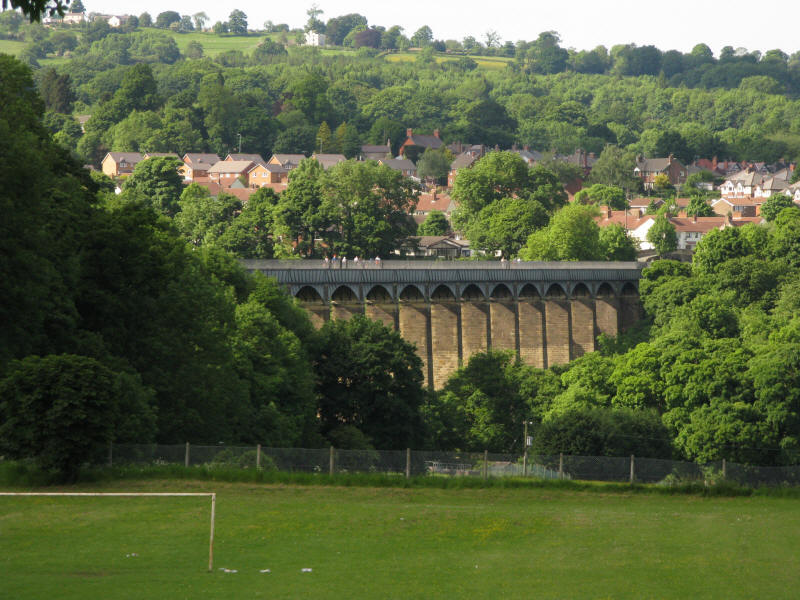
From there, looking across to the Pontcysyllte Aqueduct. Completed in
1805, it is both the longest and highest aqueduct in Britain, and is a
Grade I Listed Building
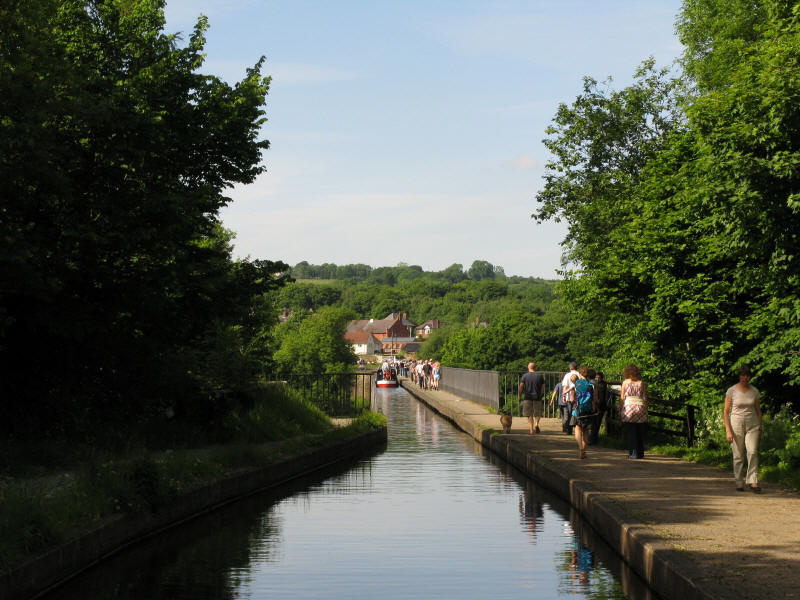
From the end of the embankment (an impressive engineering feat in
itself), looking across the aqueduct.
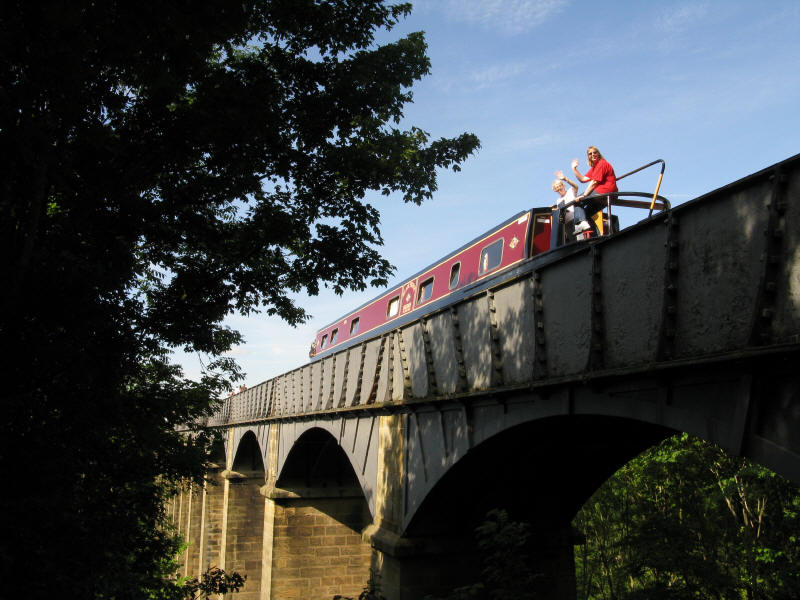
Sheila and Lucy wave from Rosa as they begin the journey across the
aqueduct
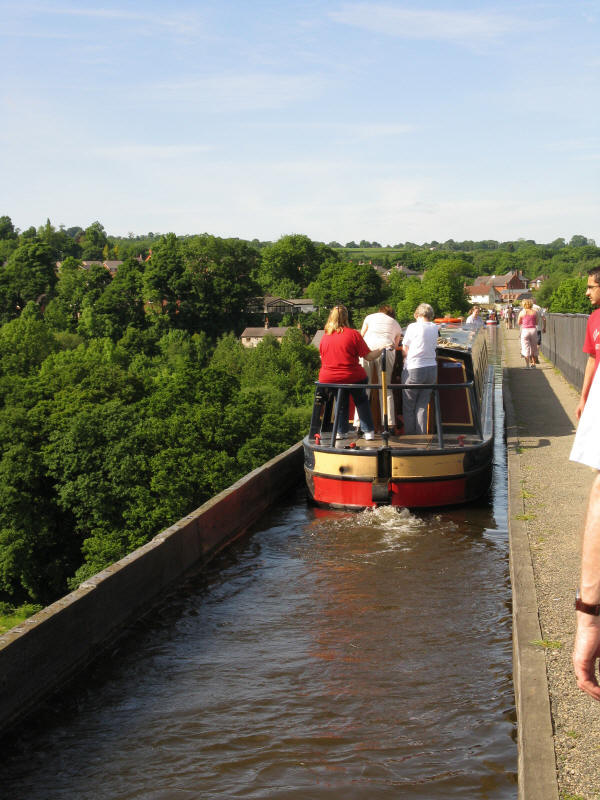
Although there are holes on the offside for railings, they have never
been used
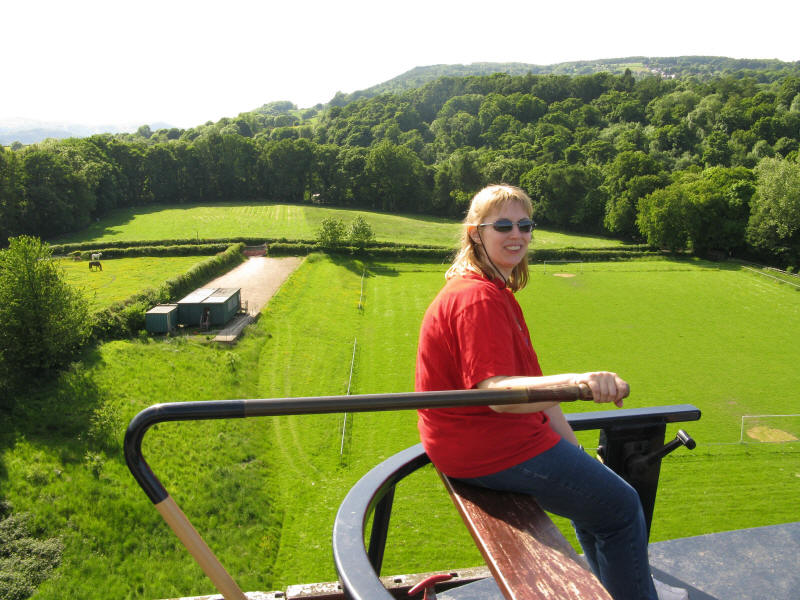
The aqueduct, built by Thomas Telford and William Jessop, is 1007 feet
(307 metres) long, 11 feet (3.4 metres) wide and 5'3" (1.60 metres)
deep. It consists of a cast iron trough supported 126 feet (38 metres)
above the river by nineteen hollow masonry piers.
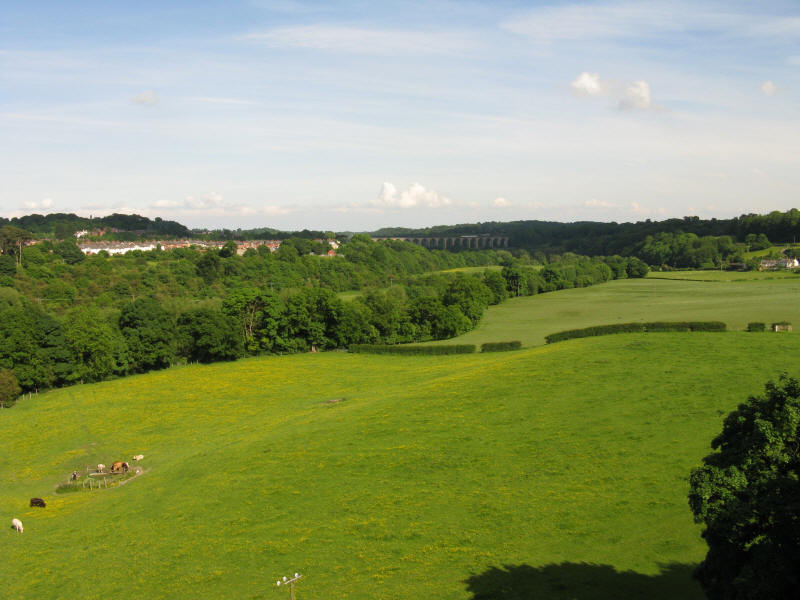
Looking east to the railway viaduct across the Dee valley, with a train
making the crossing
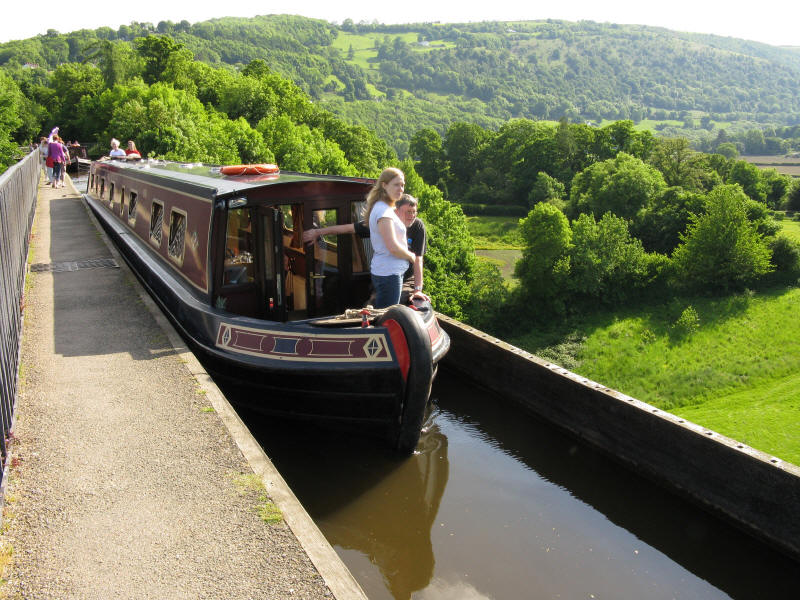
Helen and Alan inspect the view
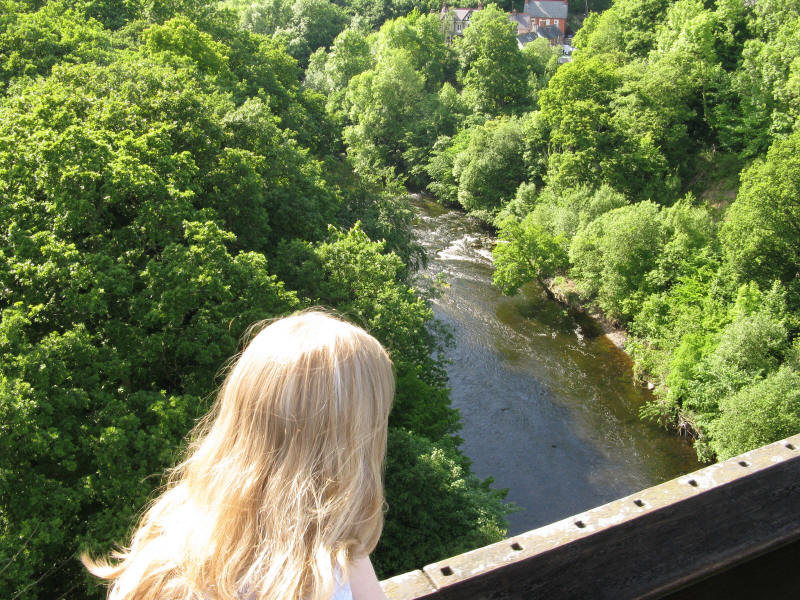
Looking down on the Dee. The mortar used comprised lime, water and ox
blood. The iron castings were produced at the Plaskynaston Foundry, and
each casting dovetails into the next. To caulk the joints, Welsh flannel
was dipped in boiling sugar, after which the joints were sealed with
lead.
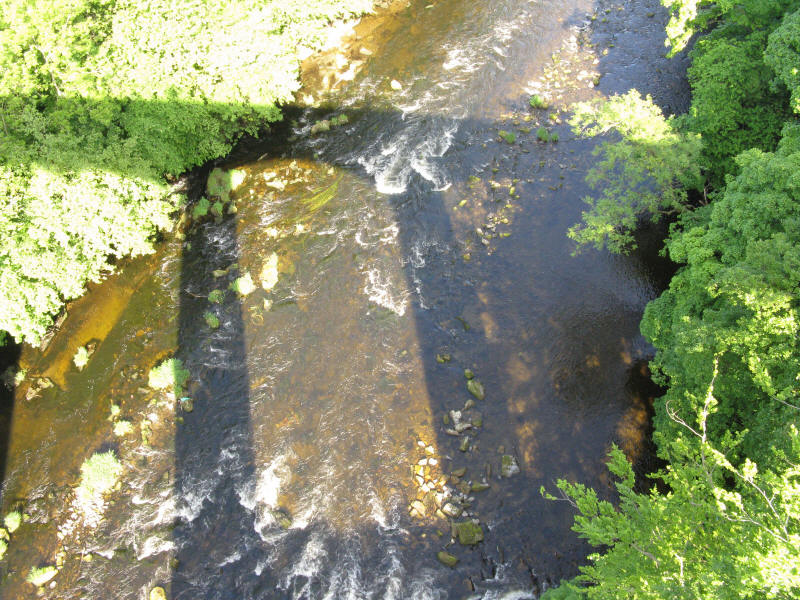
The shadow falls on the Dee, 126 feet below.
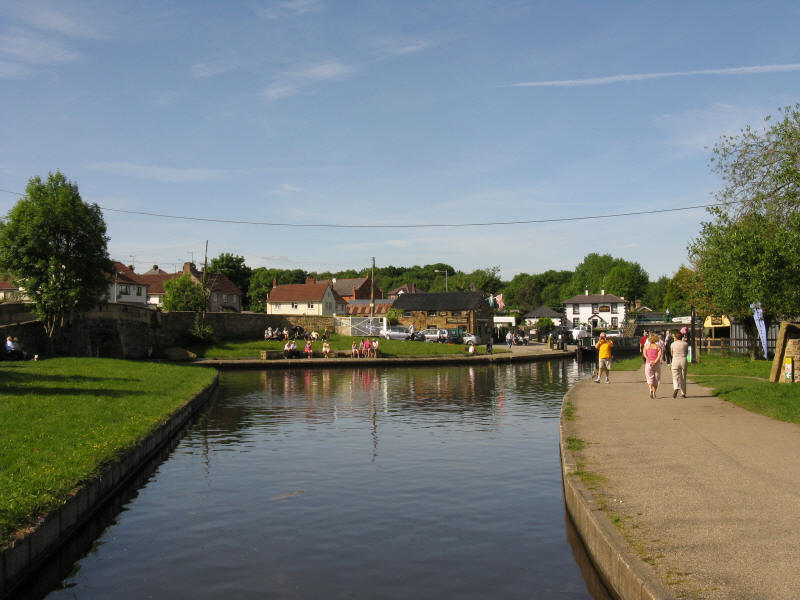
At the other side, what is now the mainline of the Llangollen Canal
turns sharp left under the bridge while what was intended to be the
mainline of the Ellesmere Canal continues ahead into what has become
Trevor Basin.
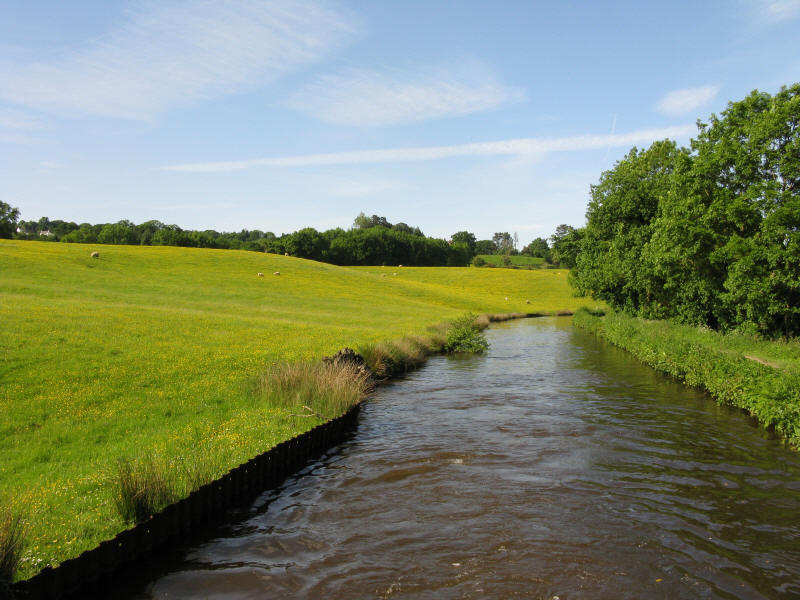
A beautiful afternoon as the canal wends its way high above the Dee
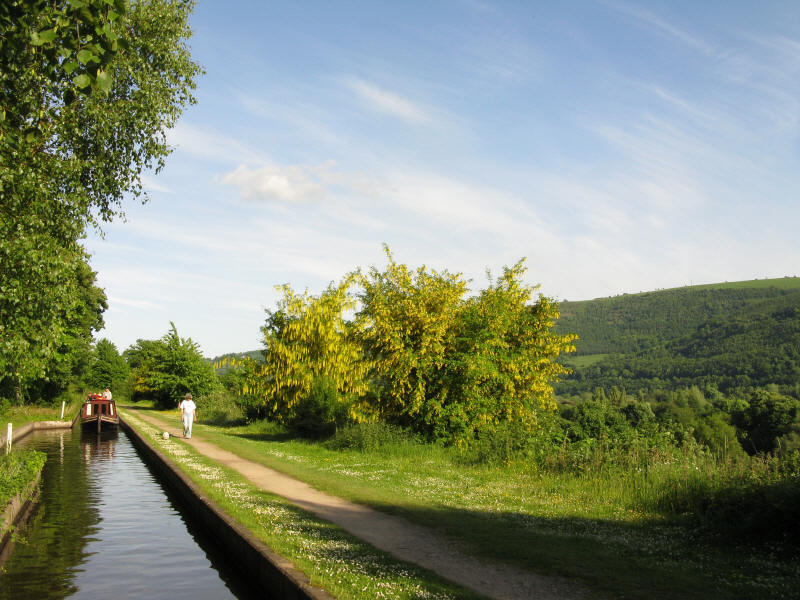
There are several narrow sections, wide enough for only one boat -
though in this case with a passing place.
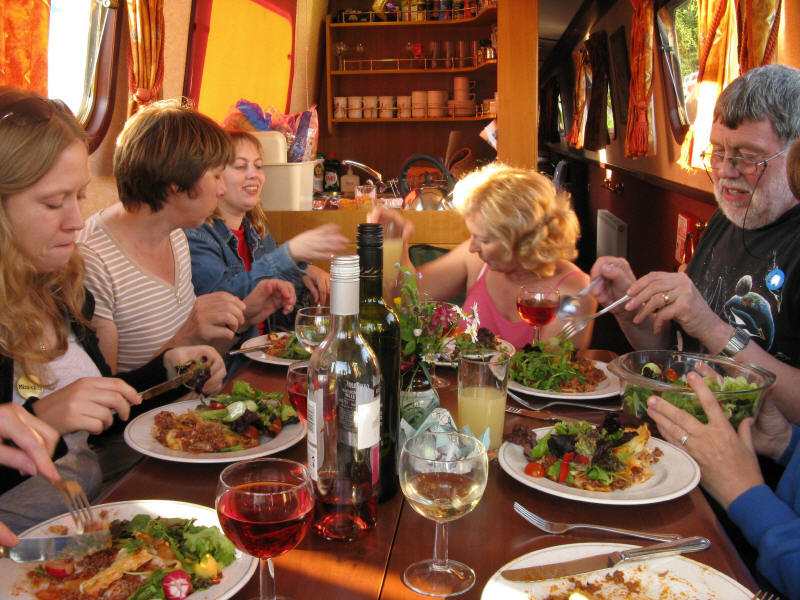
Dinner on board was a convivial affair, but rather cramped: Helen is
behind the photographer on the foredeck of the boat, and only with past
experience of this boat have we brought three of our own collapsible
chairs (one of which Jane is modelling) to enable us all to sit down.
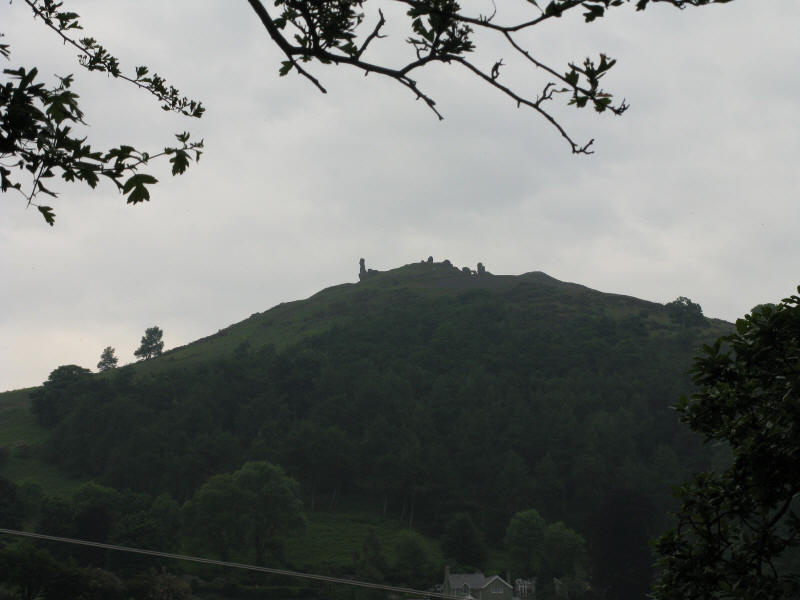
Next morning, a bit of spare time enables Stephen to walk to the top of
the hill which has Castell Dinas Bran at the top.
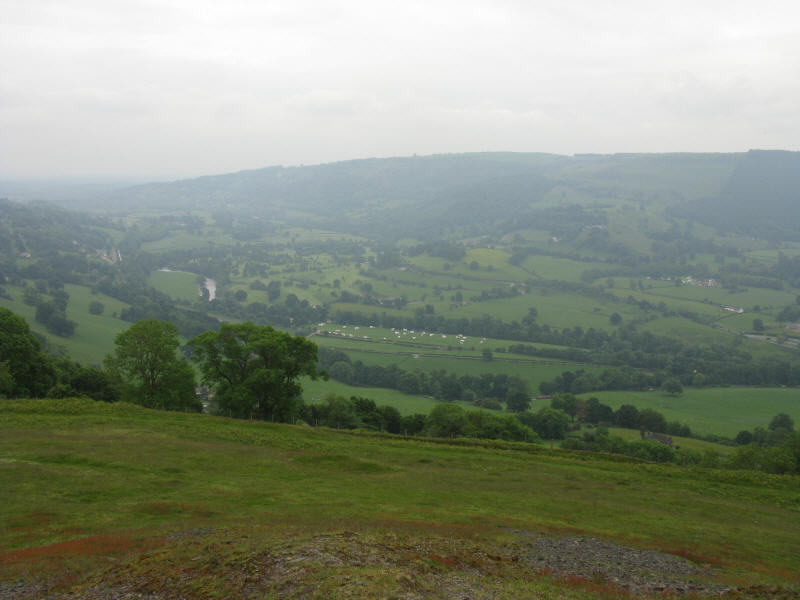
From the top, looking down the Dee valley - a boat can just be seen on
the canal, about 75% of the way to the right of picture and 40% up from
the bottom.
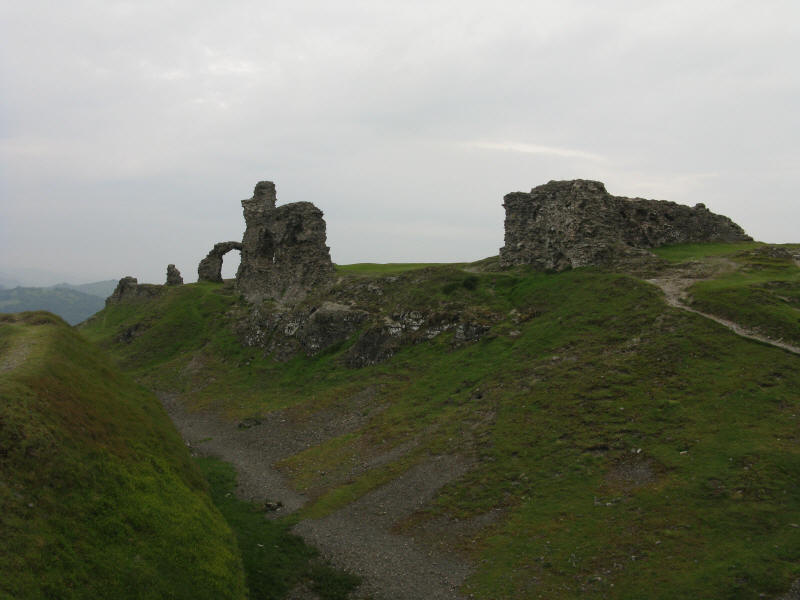
Castell
Dinas Bran. The hill is the site of a hill fort dating from 600 BC, but
the castle visible today was probably built by Gruffydd II ap Madog son
of Madog ap Gruffydd Maelor sometime in the 1260s, but was damaged by
fire in 1277, and abandoned soon after.
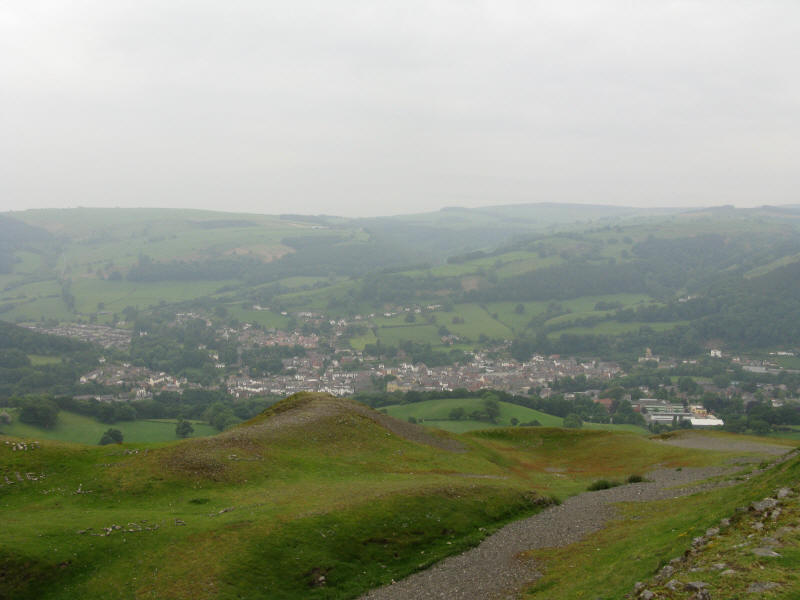
The view back to Llangollen
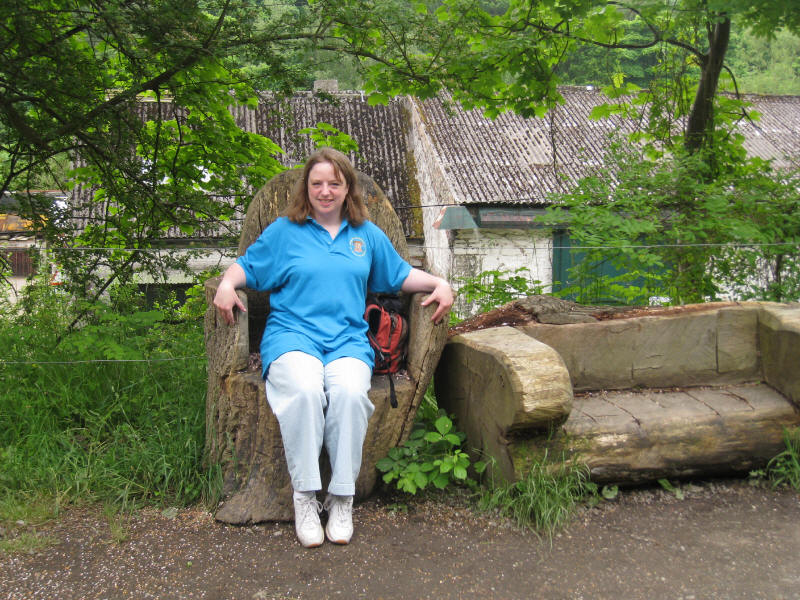
This morning's primary walk, however, was along the last section of the
Llangollen Canal, closed to motor boats, to the canal's source at
Horseshoe Falls. Helen pauses in an unusual seat.
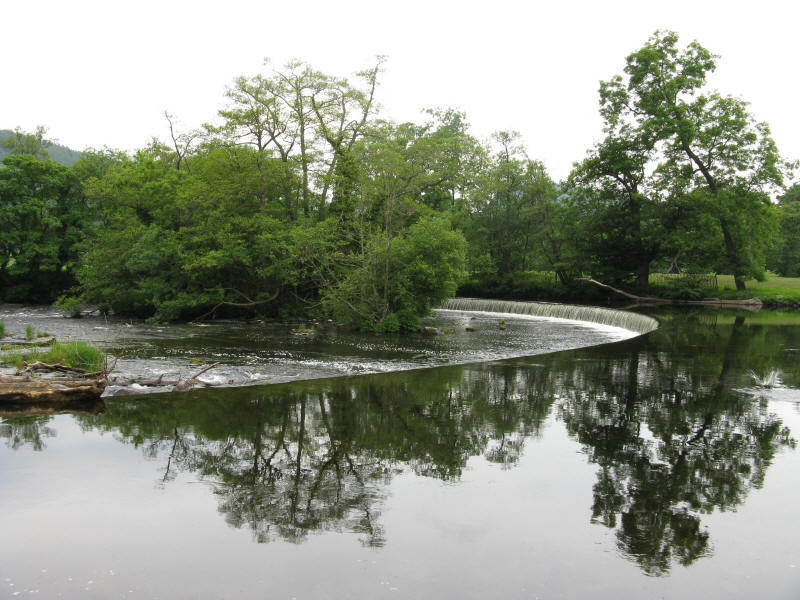
Horseshoe Falls, source of the Llangollen Canal and, indirectly, part of
the water supply for Crewe and Nantwich which travels along the canal.
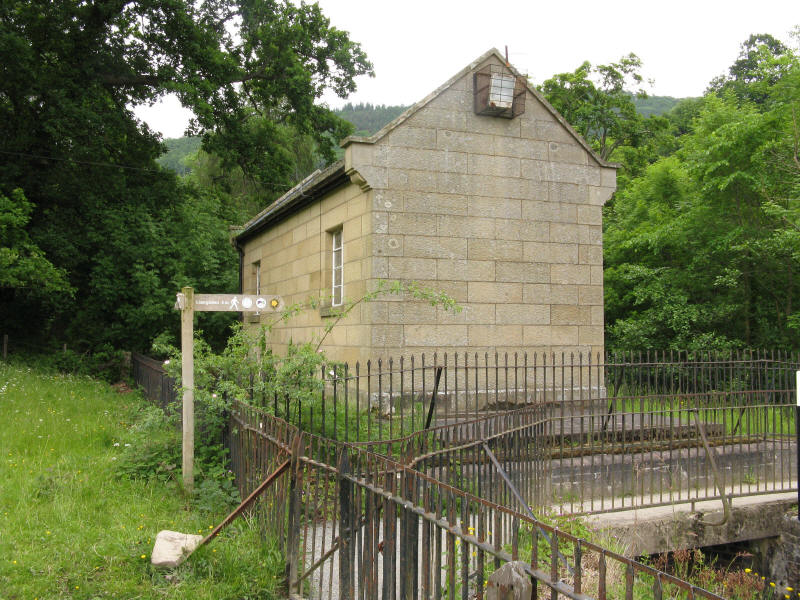
The gauging house which controls flow into the canal.
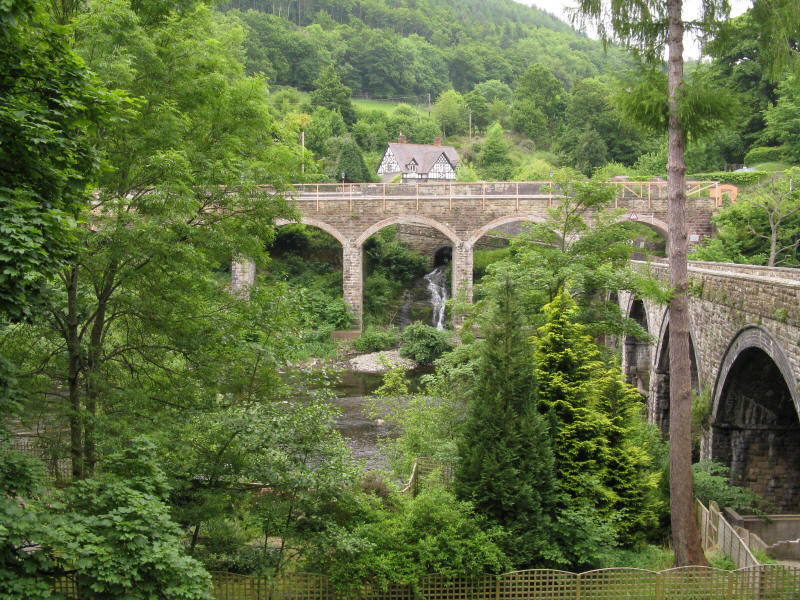
After a late start from Llangollen, and with time now pressing very
short, a quick dash up steps from the Chain Bridge Hotel takes us over
the canal and onto the road. We then take the road bridge (right) back
across the canal, across
the river and under the railway viaduct, to get to Berwyn station.
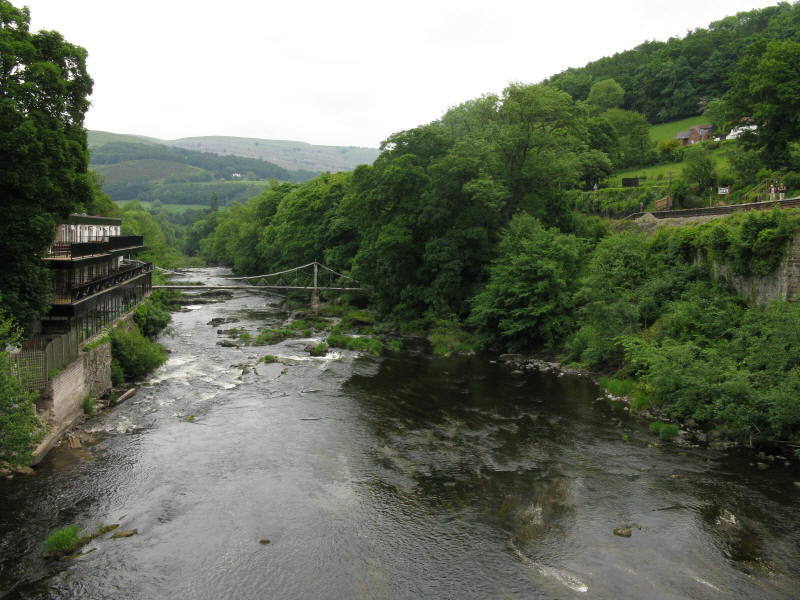
Crossing the Dee, showing the suspension bridge (sadly semi-derelict)
and the Chain Bridge Hotel left, with the platform of Berwyn station on
the right.
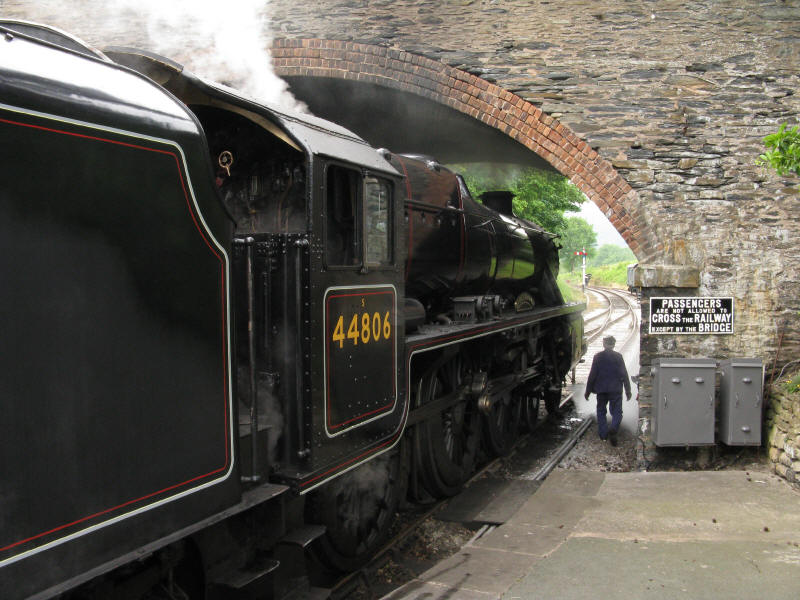
After catching the 1110 from Berwyn by the skin of our teeth, here we
are at the current western terminus of the line, Carrog, where our Black
5 is about to run around the carriages ready to form the train back to
Llangollen. Built in 1944, the locomotive was one of the last to be
withdrawn from British Railways service, surviving until 1968. She moved
to the Llangollen Railway in 1993, and most recently returned to steam
in 2007.
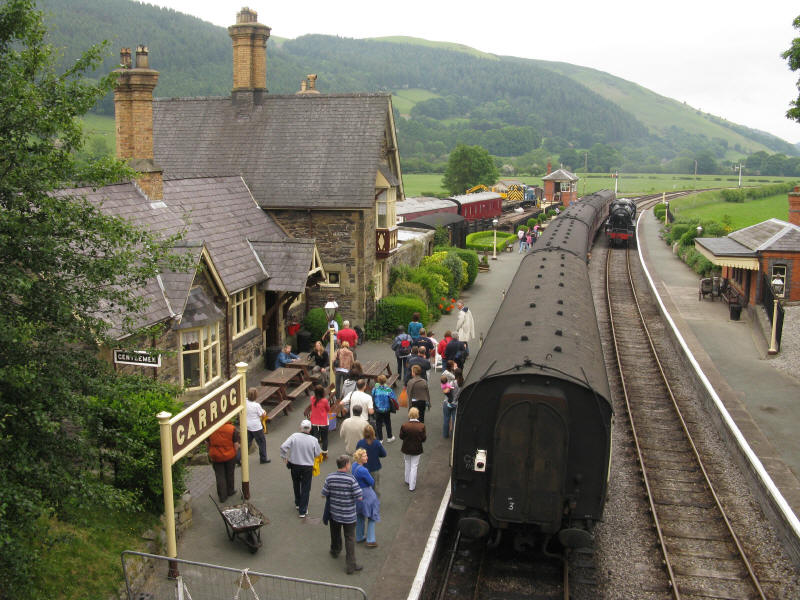
Carrog station as the locomotive runs round. Five members of our party
are visible in this picture.
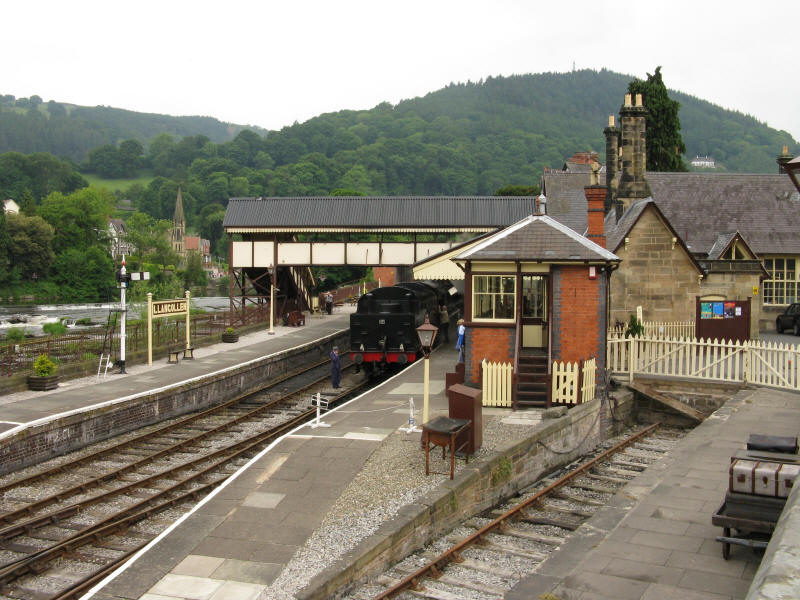
The delightful Llangollen station as we set off for lunch and some
shopping in Llangollen.
Llangollen Canal, May/June 2008
|
|